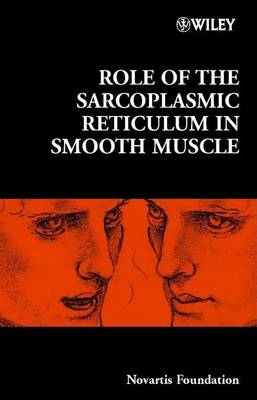Novartis Foundation Symposia
13 primary works • 14 total works
Book 222
Homology
by Novartis Foundation, Brian Hall, and Foundation Symposium Novartis
Book 223
Novartis Foundation Symposium 223 – Insect–plant Interactions and Induced Plant Defence
by Novartis Foundation
The use of plant signals and their analogues to switch on defence pathways in crop plants is covered in depth. Bringing together contributions from entomologists, chemical ecologists, molecular biologists and plant physiologists this book is truly interdisciplinary, and will be essential reading for anyone with an interest in agricultural pest control.
Book 236
Rice Biotechnology
by Novartis Foundation, Foundation Symposium Novartis, Jamie Goode, and Derek Chadwick
Enhancing tolerance to biotic and abiotic stresses: with new DNA array technologies, it is now possible to assess global genomic response to stresses. Understanding the relationships among stress pathways may create new opportunities for gene manipulation to enhance tolerance to multiple biotic and abiotic stresses. Improving nutritional quality in the grain: knowledge of the biosynthesis of micronutrients in plants permits genetic engineering of metabolic pathways to enhance the availability of micronutrients.
Book 245
Book 246
Book 247
Novartis Foundation Symposium 247 – ′In Silico′ Simulation of Biological Processes
by Novartis Foundation
Recent approaches to integrating data on cell signalling into computer models are covered. Further chapters build on these approaches to show how computerized models of intact cells can be developed. Finally, approaches to the computer modelling of whole organs such as the heart are presented. The role of computer modelling in drug design is the subject of the final chapter and is also touched on throughout the discussions.
Book 260
Novartis Foundation Symposium 260 – Osteoarthritic Joint Pain
by Novartis Foundation
Importantly, there is no relation between clinical severity, as measured by radiographic changes, and the presence and severity of joint pain. Patients with severe joint pain may have normal joint architecture as determined by X-ray, whereas patients with considerable evidence of joint remodelling may not have significant joint pain. Treatments for osteoarthritic joint pain include non-steroidal anti-inflammatory compounds, exercise, corrective shoes and surgical intervention. There remains a critical need for improved control of joint pain in osteoarthritis. This book brings together contributions from key investigators in the area of osteoarthritic joint pain. It covers the clinical presentation of joint pain, the pathways involved in joint pain, osteoarthritis disease processes and pain, experimental models and pain control. The discussions provide insights into the nature of osteoarthritic joint pain, identify key studies needed to advance understanding of the problem, highlight possible intervention points and indicate future pathways towards a better treatment of osteoarthritic joint pain.
Book 261
Novartis Foundation Symposium 261 – Pathological Pain – From Molecular to Clinical Aspects
by Novartis Foundation
Book 264
Novartis Foundation Symposium 264 – Nuclear Organization in Development and Disease
by Novartis Foundation
Book 270
Novartis Foundation Symposium 270 – Percept, Decision, Action – Bridging the Gaps
by Novartis Foundation
How are percepts built up in the cortex and how are judgments of the percept made? In what way does information flow within and between cortical regions, and what is accomplished by successive (and reverberating) stages of processing? How are decisions made about the percept subsequently acted upon, through their conversion to a response according to the learned criterion for action? How does the predicted or expected sensation interact with the actual incoming flow of sensory signals? The chapters and discussions in the book reveal how answering these questions requires an understanding of sensory-motor loops: our perception of the world drives new actions, and the actions undertaken at any moment lead to a new 'view' of the world. This book is a fascinating read for all clinical and experimental psychologists and neuroscientists, as well as anyone interested in how we perceive the world and act within it.
Book 272
Novartis Foundation Symposium 272 – Signalling Pathways in Acute Oxygen Sensing
by Novartis Foundation
The other area of controversy covered in the book is the identity of the endpoint effector(s). Some authors favour K+ channel inhibition, followed by depolarization and Ca2+ entry via L-type channels, while others propose that release of Ca2+ from intracellular stores, or capacitative Ca2+ entry and other voltage-independent pathways may be more important. The book also describes evidence for an endothelium-dependent Ca2+-sensitizing pathway involving Rho and possibly other kinases. While some of these differences can be attributed to variation between tissues, many must be related to differences in interpretation or methodology. In this book, experts in the field of acute oxygen sensing working in different tissues address these controversies and their possible origins, and discuss possible approaches whereby these controversies might be resolved. The book will be of great interest to all those working in fields where oxygen sensing is important, particularly cancer and wound healing, as well as researchers in drug discovery and biotechnology.
Book 278
Novartis Foundation Symposium 278 – Empathy and Fairness
by Novartis Foundation
In contrast to the prominent self-interest hypothesis of classic economy assuming that all people are exclusively motivated by their self-interest, humans are also strongly motivated by other-regarding preferences such as the concern for fairness and reciprocity. The notion of fairness is not only crucial in personal interaction with others in the context of families, workplace or interactions with strangers, but also guides people's behaviour in impersonal economic and political domains. This book brings together work from a wide range of disciplines to explain processes underlying empathy and fairness. The expert contributors approach the topic of empathy and fairness from different viewpoints, namely those of social cognitive neuroscience, developmental psychology, evolutionary anthropology, economics and neuropathology. The result is an interdisciplinary and unitary framework focused on the neuronal, developmental, evolutionary and psychological basis of empathy and fairness. With its extensive discussions and the high calibre of the participants, this important new book is essential reading for anyone with an interest in this topic.
Book 284
Novartis Foundation Symposium 284 – Tinkering: The Microevolution of Development
by Novartis Foundation


